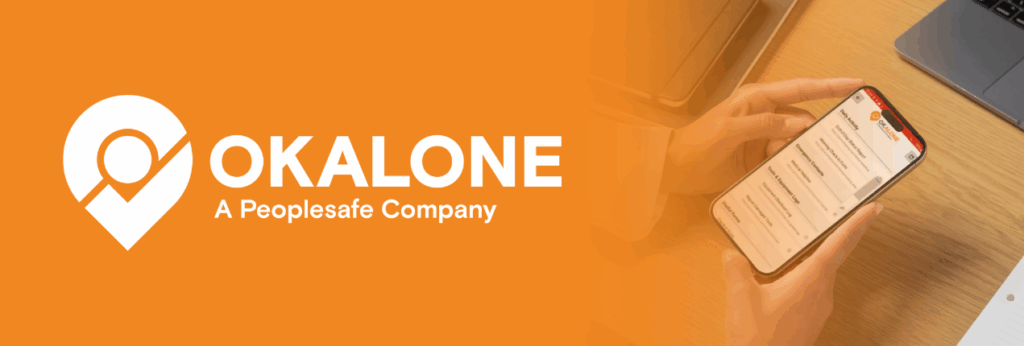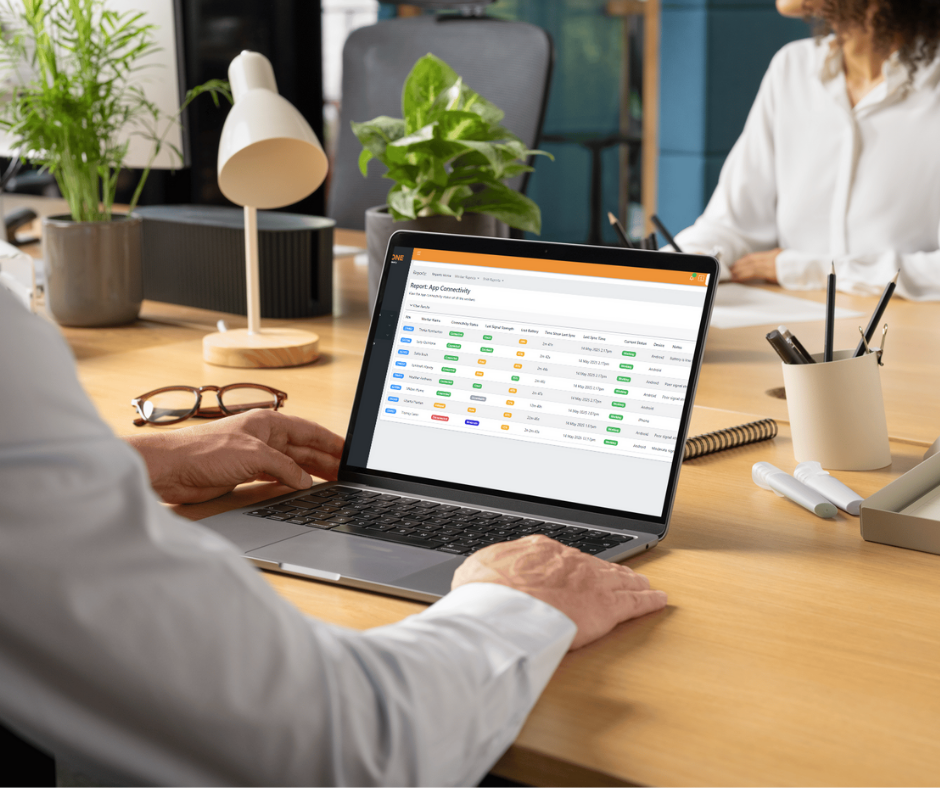Man Down Injury Statistics 2017-18
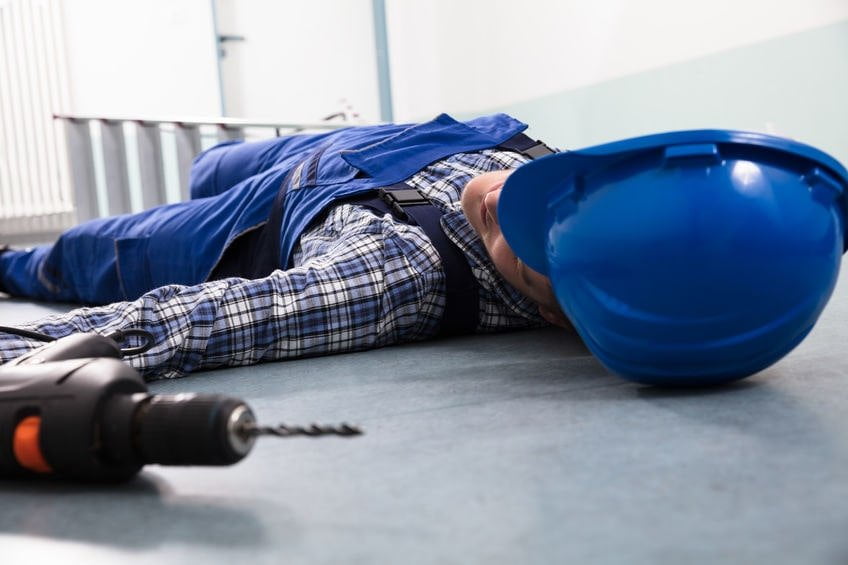
Here are some man down injury statistics for 2017-2018. Between 1974 and 2018 there has been an estimated reduction of workplace fatalities by an enormous 85%! ¹ From over 600 fatalities in 1974 down to 144 for the year 2017/18². That is a fantastic result for workplace safety.
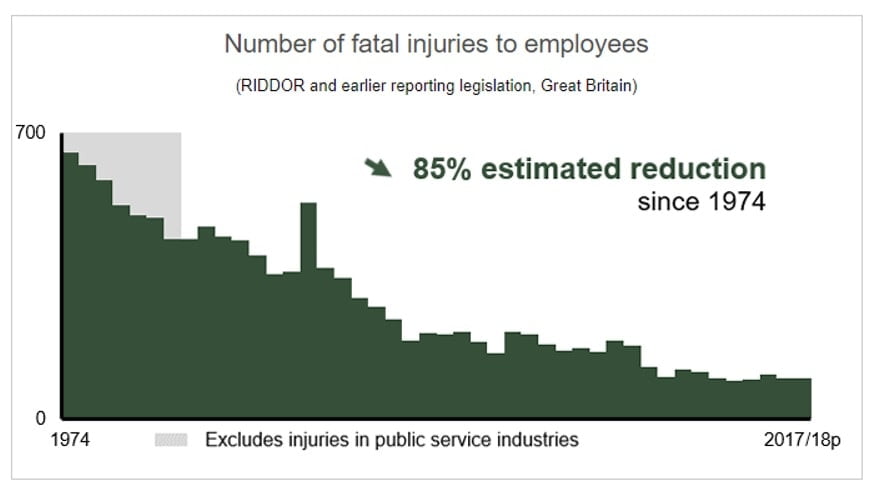
However, there are still many workplace related injuries that do not result in a fatality. According to the Labour Force Survey (LFS) of 2017/18 there were 555,000 self-reported non-fatal injuries acquired at work and Reporting of Injuries, Diseases and Dangerous Occurrences Regulations (RIDDOR) had 71,062 non-fatal injuries reported by employers for the same periodᵌ.
That is a massive 626,062 injuries over the year, averaging 1,715 a day!
Let’s break those injuries down into injury type.
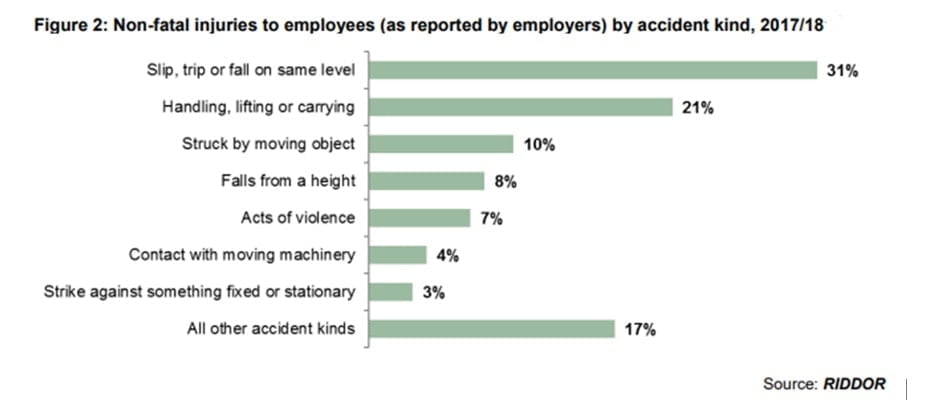
52% of employer reported non-fatal injuries to employees throughout 2017/18 were the result of only two accident types; slip, trip or fall on same level accidents (31%) and handling, lifting or carrying accidents (21%)⁴. Interestingly, these two accident kinds accounted for only 2% of fatal injuries to workers over the period 2013/14-2017/18.⁴
Could Man Down have caused the drop in fatality figures?
One factor to explain the drop in fatalities could be the rise in the use of lone worker safety solutions. An even bigger factor could be the safety solutions that have the ‘Man Down’ feature.
Man down (worker down) systems are calibrated to detect movement, or a lack of movement. Using a worker’s own phone (iPhone or Android) the Man Down feature can be set to a period of time (1 minute- 1 hour) by the worker and if there has been no movement within that time frame an alarm sounds. This alarm allows the worker to check in and verify they are fine. If the worker does not respond to the alarm, then an alert is sent to their supervisor saying there has been no movement.
How could this have impacted on fatality figures?
The statistics from 2017/18 show 31% of accidents were slip, trip or fall on the same level. If a worker on their own has a slip, trip or fall on the same level and is seriously injured, knocked unconscious and bleeding how can they call for help? They can’t and could therefore become one of the 2% of fatalities unless someone else happens along.
However, if they have a safety solution with the man down feature, they would receive an alarm after their set time, if they did not respond their supervisor would be alerted and if they did not respond to them, someone would be sent to find them. Drastically reducing the chances of fatality.
This feature is available through the Ok Alone lone worker safety solution. Using Ok Alone allows workers to request immediate assistance through their ‘Help’ button, check in at set times to inform their supervisors they are fine, turn on ‘High Risk’ if they are entering an area they deem more dangerous and use ‘Man Down’ to ensure someone will be alerted if they can’t call for help.
See how Ok Alone can help your workers https://www.okaloneworker.com
Book a Demo Today
Alternatively, get a free trial of the app
Want to try OK Alone? Click the button below and enter your details. It's free and no credit card is required.
